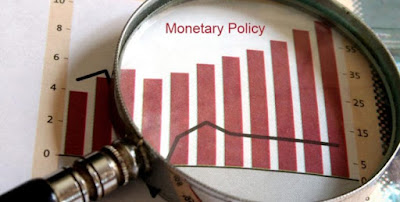Different rates (Monitory policy) Repo, Reverse Repo, Bank Rate, Call Rate, CRR & SLR
Repo (Repurchase) Rate
Repo rate is the rate at which banks borrow funds from the RBI to meet the gap between the demand they are facing for money (loans) and how much they have on hand to lend.
If the RBI wants to make it more expensive for the banks to borrow money, it increases the repo rate; similarly, if it wants to make it cheaper for banks to borrow money, it reduces the repo rate.
Reverse Repo Rate
This is the exact opposite of repo rate.
The rate at which RBI borrows money from the banks (or banks lend money to the RBI) is termed the reverse repo rate. The RBI uses this tool when it feels there is too much money floating in the banking system
If the reverse repo rate is increased, it means the RBI will borrow money from the bank and offer them a lucrative rate of interest. As a result, banks would prefer to keep their money with the RBI (which is absolutely risk free) instead of lending it out (this option comes with a certain amount of risk)
Consequently, banks would have lesser funds to lend to their customers. This helps stem the flow of excess money into the economy
Reverse repo rate signifies the rate at which the central bank absorbs liquidity from the banks, while repo signifies the rate at which liquidity is injected.
Bank Rate
This is the rate at which RBI lends money to other banks (or financial institutions .
The bank rate signals the central bank’s long-term outlook on interest rates. If the bank rate moves up, long-term interest rates also tend to move up, and vice-versa.
Banks make a profit by borrowing at a lower rate and lending the same funds at a higher rate of interest. If the RBI hikes the bank rate (this is currently 6 per cent), the interest that a bank pays for borrowing money (banks borrow money either from each other or from the RBI) increases. It, in turn, hikes its own lending rates to ensure it continues to make a profit.
Call Rate
Call rate is the interest rate paid by the banks for lending and borrowing for daily fund requirement. Si nce banks need funds on a daily basis, they lend to and borrow from other banks according to their daily or short-term requirements on a regular basis.
CRR
Also called the cash reserve ratio, refers to a portion of deposits (as cash) which banks have to keep/maintain with the RBI. This serves two purposes. It ensures that a portion of bank deposits is totally risk-free and secondly it enables that RBI control liquidity in the system, and thereby, inflation by tying their hands in lending money
SLR
Besides the CRR, banks are required to invest a portion of their deposits in government securities as a part of their statutory liquidity ratio (SLR) requirements. What SLR does is again restrict the bank’s leverage in pumping more money into the economy.
Marginal Standing Facility Rate (MSF)
When banks face acute financial shortage, they can avail this special facility offered by RBI. In MSF, banks can borrow cash from RBI against their approved government securities. This option is preferred during emergency and critical situations only. MSF rate is always higher than Repo Rate as banks need the funds instantly. Marginal Standing Facility Rate currently stands at 7% per annum.
Marginal Cost of Funds based Lending Rate (MCLR)
RBI made changes to the existing Base Rate system this year. They have introduced Marginal Cost of Funds based Lending Rate or MCLR which is a new methodology to set the lending rates for commercial banks. Previously, banks used to lend as per the Base Rate fixed by The Reserve Bank of India but with the introduction of MCLR, banks will have to lend using rates linked to their funding costs. Simply put, bank raises their funds through deposits, bonds and other investments. For the banks to function smoothly, there are costs involved like salaries, rents and other bills. Considering that banks also need to make profits every year, RBI has included the expenses of the bank and have come up with a formula which can be used by banks to determine their lending rate. The current MCLR (overnight) stands at 8.85 to 9.15% per annum.
Savings Deposit Rate
The interest rate earned by an account holder for the amount maintained in their savings account is called savings deposit rate. The current savings deposit rate is 4.00% per annum.
Term Deposit Rate
Customers who deposit money into their account and agrees to fix it till a particular date is awarded with term deposit rate. The current term deposit rate for more than one year tenure is 7.00% to 7.50% per annum.

Comments
Post a Comment